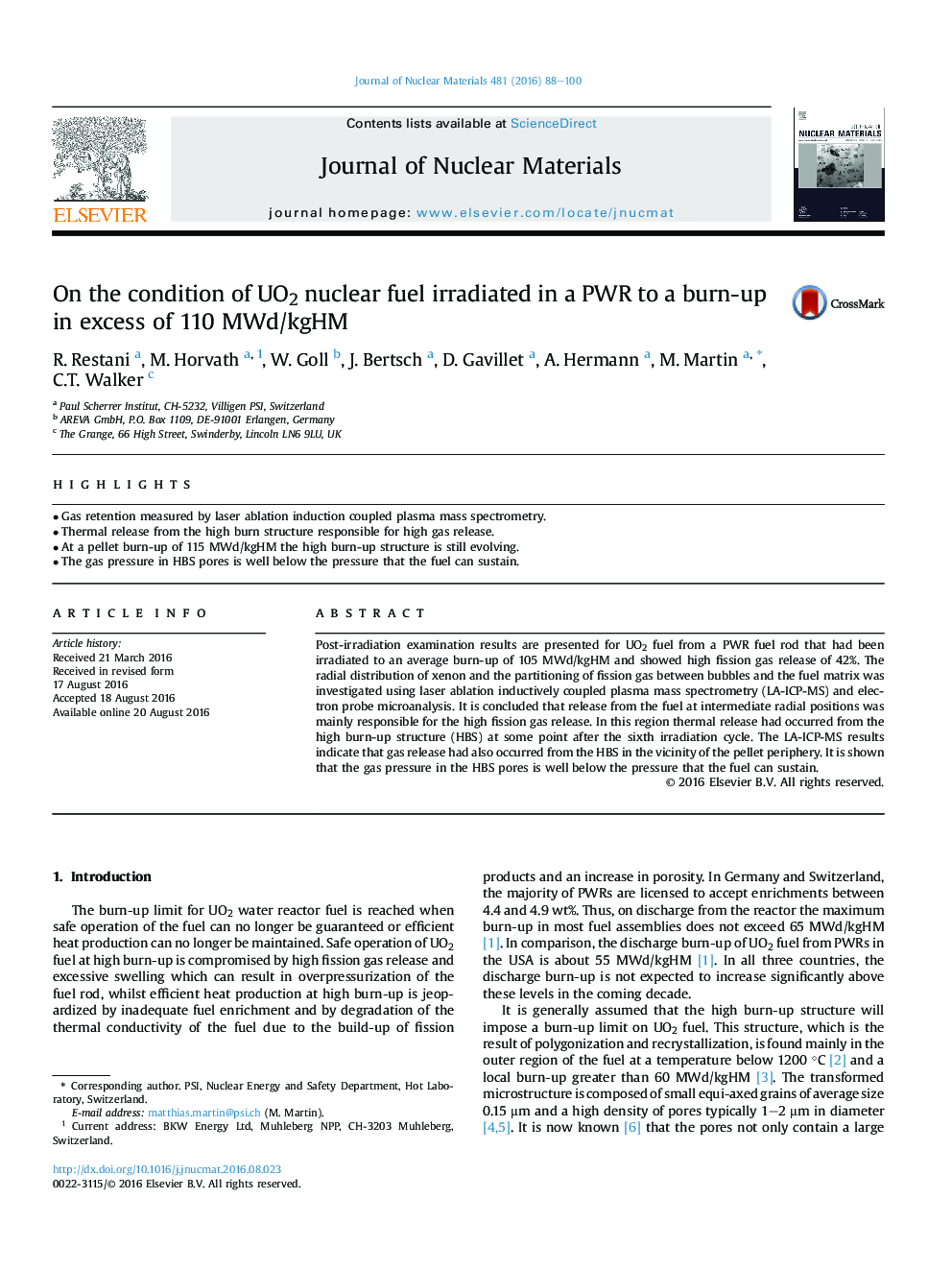| Article ID | Journal | Published Year | Pages | File Type |
|---|---|---|---|---|
| 5454324 | Journal of Nuclear Materials | 2016 | 13 Pages |
â¢Gas retention measured by laser ablation induction coupled plasma mass spectrometry.â¢Thermal release from the high burn structure responsible for high gas release.â¢At a pellet burn-up of 115 MWd/kgHM the high burn-up structure is still evolving.â¢The gas pressure in HBS pores is well below the pressure that the fuel can sustain.
Post-irradiation examination results are presented for UO2 fuel from a PWR fuel rod that had been irradiated to an average burn-up of 105Â MWd/kgHM and showed high fission gas release of 42%. The radial distribution of xenon and the partitioning of fission gas between bubbles and the fuel matrix was investigated using laser ablation inductively coupled plasma mass spectrometry (LA-ICP-MS) and electron probe microanalysis. It is concluded that release from the fuel at intermediate radial positions was mainly responsible for the high fission gas release. In this region thermal release had occurred from the high burn-up structure (HBS) at some point after the sixth irradiation cycle. The LA-ICP-MS results indicate that gas release had also occurred from the HBS in the vicinity of the pellet periphery. It is shown that the gas pressure in the HBS pores is well below the pressure that the fuel can sustain.
